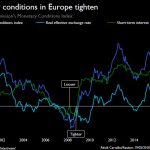
The start of 2016 hasn’t been good for investors’ nerves, as stock markets have mostly gone in one direction – down.
The old mantra of “buy the dip” seems to have turned into a money loser. The new mantra looks more like “sell the rip.”
I’ve seen this type of global turmoil before, starting with the 1987 crash. I believe it’ll continue for the foreseeable future. Here are seven things Wall Street Daily readers will need to pay attention to for the rest of 2016, in order of importance.
Number 1: Central Bank Policies
We’re in an age where financial markets are highly reliant on central bankers. It’s unfortunate then that the bankers have gone bonkers in their efforts to stimulate both economies and markets.
On January 29, Japan joined their European brethren in going through the “looking glass.” In other words – negative interest rates. The trek into this land is being led by Sweden, which recently pushed its rate down to negative 0.5%. And this despite Sweden’s economy being relatively strong –GDP growth in 2016 was forecast at 3.5%.
There is now more than $6 trillion worth of government sovereign debt globally that trades with a negative yield. And German Bunds are hovering close to zero.
The only question now is whether Janet Yellen will follow suit.
If not, don’t be shocked by other “unconventional” methods. For example, the Swiss National Bank’s balance sheet already looks like one for a hedge fund – by owning a bunch of stocks such as Apple.
Central bankers seem to have turned into Doctor Frankensteins, experimenting on both the global economy and markets.
Number 2: Currency Wars
The current global currency war is a direct result of central bank policies. Lower rates often turn into lower currencies, forcing other countries to react in kind in a race to the bottom.
The good news here is that, at times like these, central banks illicit the opposite reaction from the one they intended.











Leave A Comment